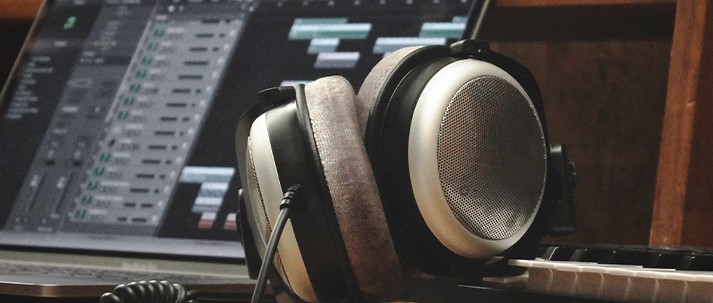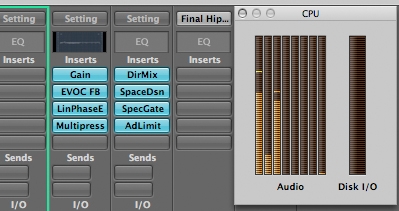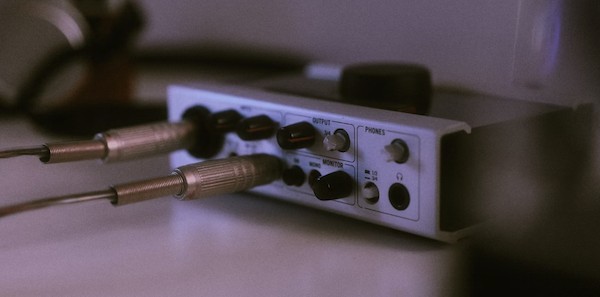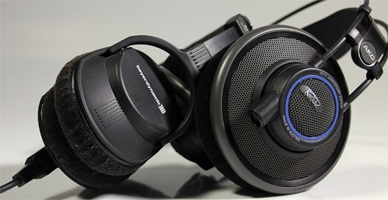
'How much gear do I need'?' As an aspiring producer, this is a question you will likely face countless times. The answers you give will be profoundly influenced by your production philosophy, which may in turn be influenced by what you read on forums, in magazines, who your favourite producer is, what gear they use and so on.
One answer is of course to simply buy everything you can possibly lay your hands on but I'm going to assume two things in continuing with our discussion - firstly, that this is beyond your means and secondly, that this is a poor approach to the question anyway.
My reasoning with regard to the second assumption is borne from my own production philosophy, which, mercilessly, is a humble one - 'less is more and know the little you have as well as you can.'
Humble Beginnings
In essence, what this boils down to is I don't believe you need vintage tube compressors, Pultec hardware EQs and Genelec passives to make great music (although it certainly wouldn't hurt) - all you need are the essentials, a thorough knowledge of how they operate and a healthy does of inspiration.
So, I'm not going to cover exactly how to use the following equipment or even which models I think you should take home but I will detail what I consider to be the bare essentials of a practical and ultimately useful production setup - the rest is up to you.
The Setup
Before we begin in earnest let's get another assumptions out of the way. I and my colleagues at ModeAudio are most passionate about electronic music and we have made this the foundation on which our company is built. Thus, I'm going to assume you want to make electronic music, broadly speaking, with a computer of some form.
The Computer in the Corner of the Room
Now, first things first - you need a computer. This can be of any kind, think laptop for portability, desktop for power and speed and a powerful, speedy laptop if you have loads of money. RAM is a big factor in determining the performance of a computer having to perform lots of tasks at once, such as one running a DAW with lots of tracks of audio being processed in real-time.
My advice - get as much RAM as you can afford and if you're buying Mac, get as many cores as you can. More cores means more processing streams in software like Logic, which in turn means you can pile on the plugins and stack up the tracks and the computer won't freak out.

Supa Software
Next - software. How to choose the right DAW for you was discussed in a previous article, so I won't say much here, other than find something that feels right and stick with it. Learn everything you can about the software and the time it takes from having an idea to realising it will lessen to virtual non-existence.
You know the analogy guitar teachers love to make about likening the instrument to an extension of your arm' The same wisdom applies here - you want to learn your software to the point where it is an integral part of the way you think about and work with music.
Dedicate Your Audio Conversion
Whilst certainly less essential than a computer and software, getting yourself a dedicated audio interface is a simple, relatively cheap and mightily effective way to upgrade the sound quality of your setup. This will relocate one of the most vital parts of the audio processing chain from your computer's generic, basic audio components to a dedicated, purpose-built circuit - analog to digital conversion and vice versa.
This is the part of the signal flow where your audio is transformed from being dealt with in digital terms (1s and 0s aka binary or computer-speak) to analog (or voltage and current). The signal is converted from analog to digital (AD conversion) when you are recording and from digital to analog (DA conversion) when monitoring. Put simply, if you want nice sound then you need good AD/DA converters - generally the more you spend the better you get, but even the cheapest dedicated audio interface will upgrade the sound quality from the built-in units in your computer.

Inputs and outputs are important to consider when choosing an audio interface - might you want to record more than one instrument at a time' How many speaker configurations do you need' Do you need more than one headphone output' As a starting point, I'd say 2 in, 2 out is enough for basic, essential operation, from monitoring to humble recording.
A final point to consider here is portability. I have found bus-powered audio interfaces to be extremely useful, as all you require to get them working is a laptop, USB cable and the unit itself. Simplicity incarnate!
Speak to Me or Get in My Head
Monitoring is an incredibly important part of any producer's setup and one you should spend time considering. It is a good idea to have a number of options to compare mixes against - there's nothing worse than spending weeks on a mix with one set of speakers, only to play it on your car stereo and find it sounds weak and flat.
A nice set of monitors will get you out of a lot of mixing issues and the single most important factor to consider here is frequency response. You can study the charts till you're blue in the face but really the only way to know how speakers sound in relation to one another is to go down to your local music shop, plug in a track or mix you know well and compare the outputs. Again, spending more will get you more but there are some incredibly flat-response and commendable models out there that won't cost you the earth.

Mixing and producing with headphones is another option and one that can be especially useful if you don't have much space or live somewhere where noise spill is an issue (i.e. pretty much anywhere where other people also live). My top tip for cans is to get hold of an open-back model, again with as flat a frequency response as you possibly can (time for another trip to the music store).
Open-back headphones produce a more natural sound than closed-back designs, as soundwaves bouncing off your outer ears and the insides of the headphone cup are able to leave the headphones, rather than reverberating off the back of the cup and interfering with direct sound from the headphone speaker.
Accessory to the Rhyme
Accessories are the least important part of your setup in many respects, whereas in others they are the most essential. In terms of simply being able to work with music in an audio editor and get great sound in and out, you don't need any more than what I've specified above. However, when it comes to actually getting creative, I simply couldn't do without certain controllers that make the process of getting ideas into my computer both a more musical and enjoyable experience.
Now, I'm always thinking about my wallet (it's part of the reason our packs are so cheap) so I don't have many accessories at all but what I do have I use all the time. I have a MIDI keyboard for playing in melodic parts and a MIDI pad controller for rhythmic elements and boy are they fun to use!
You will have to learn for yourself what is most essential for you - all I can say is I personally think there's a world of difference between the fiddly experience of using a mouse to click and drag on notes in a grid, and loading up a synth patch or samples in a sequencer, hitting record and tapping on those keys or pads. It really is the difference between me getting excited and actually making some music and doing nothing at all.
In a Nutshell
To distill all the above into a single equation gives us the following:
essential production setup = computer + software + audio interface + monitoring + accessories
Assuming you already have some form of computer (how else would you be reading this you telepath!'), you can get yourself examples of the other elements in the chain at some pretty friendly prices these days, so there isn't much of a financial obstacle in the way of you and making some interesting sounds. I'd love to know what you setup looks like and if you need any further advice or have questions, drop me a line using our contact form. Until next time, make some noise!
Check out our complete set of Production Tips articles here.










